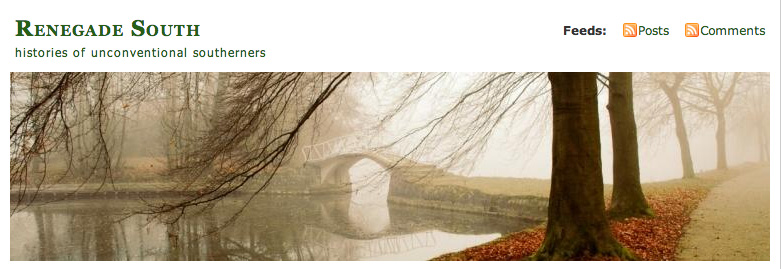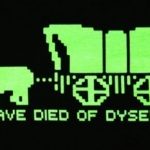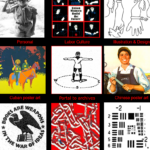Internet technology is starting to have a profound influence on the ways we do history. Historians have found new places to write history, new ways to make sources available, and some historians have mastered the digital technology to create new kinds of data and new kinds of sources for asking new kinds of questions about the past.
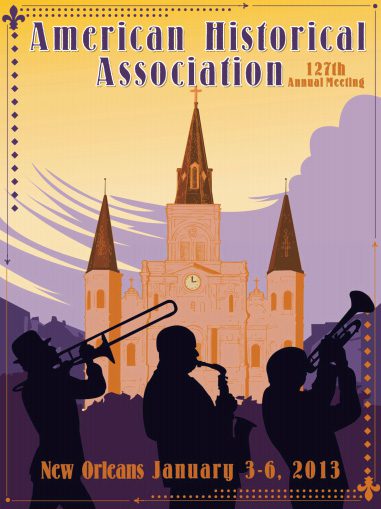 How important are these changes? At this year’s annual convention of the American Historical Association, there were 43 panels on some aspect of what we are calling digital history. The two main showcase sessions, the Presidential and the Plenary panels, were also devoted to topics in digital history.
How important are these changes? At this year’s annual convention of the American Historical Association, there were 43 panels on some aspect of what we are calling digital history. The two main showcase sessions, the Presidential and the Plenary panels, were also devoted to topics in digital history.
At Not Even Past we are committed to making good history accessible online, so I have developed an interest in all the ways history was becoming available to anyone with access to a computer. Over the last few years, digital history and digital humanities more broadly have moved from the esoteric margins of the profession to center stage.
In this series of blog posts, I will offer a survey of the digital landscape. That landscape has become so large and varied that it is impossible to cover completely. The good news is that the world of digital history is deeply interlinked. When you click onto one website or blog, you will find links to many more projects, blogs, sources, visualizations, and more. If you’re not careful, and if you’re like me, you could get lost on the enticingly unfamiliar pathways and spend far more time exploring than you expected. But you will have fun!
Digital History refers to many things, but I’m dividing it into three basic categories:
- Putting history writing online. That’s what we’re doing at Not Even Past, and there are many other forms that great history writing takes online.
- Putting sources online that used to be harder to learn about or harder to get your hands on or that required a walk to the library or a research trip halfway around the world.
- Creation of new kinds of sources that make use of digital, web-based technology to tell historical stories in new ways or answer questions that require massive digital power or even make new kinds of documents.
Today I will write about how you can find high quality history writing online. There are far too many history blogs to attempt a representative survey so I have listed sites that I like because they consistently offer compelling writing on subjects that interest me even if they are outside my own field. Most blogs also include a “blogroll” of related sites, so once you start clicking you will find much more of what interests you; far more, probably, than you have time to read. And if you have a favorite history blog or two, send them with using the “Comments” and we’ll share them with the rest of our readers. Let’s start talking about Digital History.
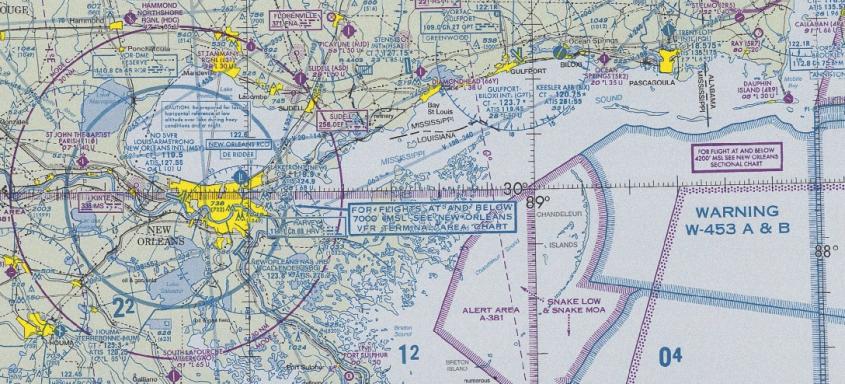
Modern aeronautical map, from “Mapping the Earth, Mapping the Air,” by Felipe Cruz
Not Even Past is unusual in that it offers articles on a wide range of topics and in a wide range of formats. It’s also unusual in that it’s a collective project that makes accessible the research of professional historians in a single history department at a single university. Some other groups at The University of Texas at Austin have also developed some magazine-like collective blogs that are excellent. Four of our graduate students have started what they call “a new journal of narrative and experimental history.”
The Appendix posts long-form articles and short blog posts on sources and topics that don’t usually find their way into professional publications. They play with different styles of narrative – including an article written as a dialogue and an adaptation of a sixteenth-century travelogue by a Portuguese merchant as a graphic novel. Articles are both informative and provocative, encouraging us all to think about what it means to write history. The End of Austin is another group blog, this one produced by the American Studies department. It is devoted to thinking about Austin’s peculiar culture as a “city of perpetual nostalgia… where rapid change pulls against profound attachments to the way things are (or how they are imagined to be).” Another great collective effort from my own field of history can be found at Russian History Blog. A pretty eclectic site, they publish articles on historical documents, contemporary films, teaching issues, and several very interesting group discussions of recent books in the field. Asian History is superbly well served by Frog in a Well, a collective blog on Korean, Japanese, and Chinese history. Religion in American History and the US Intellectual History Blog are two excellent blogs that post just what the titles say. What’s the Deal With and Origins offer historical background to contemporary events; as does the behemoth History News Network.
Many blogs are written by individual historians about their specialized fields. Some very popular blogs include The Chirurgeon’s Apprentice, by medical historian Lindsey Fitzharris devoted to the horrors of pre-anesthetic surgery. Renegade South is Victoria Bynum’s blog about anti-slavery, mixed-race, and other unconventional southerners.
Timothy Burke’s Easily Distracted is an eclectic blog that might broadly be described as covering the encounter of professional history and contemporary public intellectual issues. BibliOdyssey is a primarily visual blog of historical book illustrations. Some mainstream publications have experimented with various kinds of history blogs. The New York Times, for example, has been running Disunion, a blog begun by Adam Goodyear and continued by additional historians, that is devoted to the history of the US Civil War.
If you don’t want to take my word for it you can Google “history blog” to find blogs that interest you. If you’d like a more reliable guide to the best history blogging you can check out the History Carnival.
History Carnival is a monthly selection of the best individual history blog posts from the previous month, chosen and posted on a different blog each month. (Not Even Past hosted the History Carnival in May 2012.) There’s a general History Carnival and then there are HCs on specific topics: Carnivalesque covers early modern Europe and others are listed here.
There are also a number of good blogs about Digital History. Two of the earliest and best digital historians blog at Dan Cohen’s blog and Miriam Posner’s blog. Benjamin Schmidt’s digital history blog, Sapping Attention, can get very technical but is innovative and interesting. Digital Humanities Now and Global Perspectives on Digital History keep up with the latest news on projects, people, software, and conferences about digital history and other fields.
 Some sites invite the equivalent of public blogging. One of the most popular is History Pin. Anyone can pin a photo on this site and tell a story about it, or join it to a group of similar photos. History Pin is used by individuals as well as institutions. The US National Archives, for example, has its own “collection” on History Pin.
Some sites invite the equivalent of public blogging. One of the most popular is History Pin. Anyone can pin a photo on this site and tell a story about it, or join it to a group of similar photos. History Pin is used by individuals as well as institutions. The US National Archives, for example, has its own “collection” on History Pin.
Finally, there are a number of photoblogs that run photography rather than text. Three of the best are produced by mass media news publications so they are usually focused on the contemporary, but they often run historical series. This month The Atlantic’s In Focus is running a series on the Bosnian War of the 1990s. The Big Picture, produced by the Boston Globe, recently ran a series called “Searching for America,” that displayed photos from the DOCUMERICA project run by the Environmental Protection Agency in the 1970s. Lens, the photoblog of The New York Times often features historical photographs. There are also blogs that post older historical photos. Shorpy runs several new historical photographs a day, usually from US history. The Retronaut is more international in scope, such as color photos of China in 1912, or, today’s post, Korean Girls playing on a see-saw.
The posting of historical photographs online begins to shift us away from the blog-world of historians writing history toward the massive project of digitalizing historical documents and making them available to the public. In the next blog in this series, I’ll turn to the availability of online sources for studying history and introduce you to everything from smaller sites with sources on, for example, women in 19c Iran to large collections of documents on US History from the National Archives and the National Humanities Center.
Digital History: A Primer (Part 2). Putting Sources Online.

